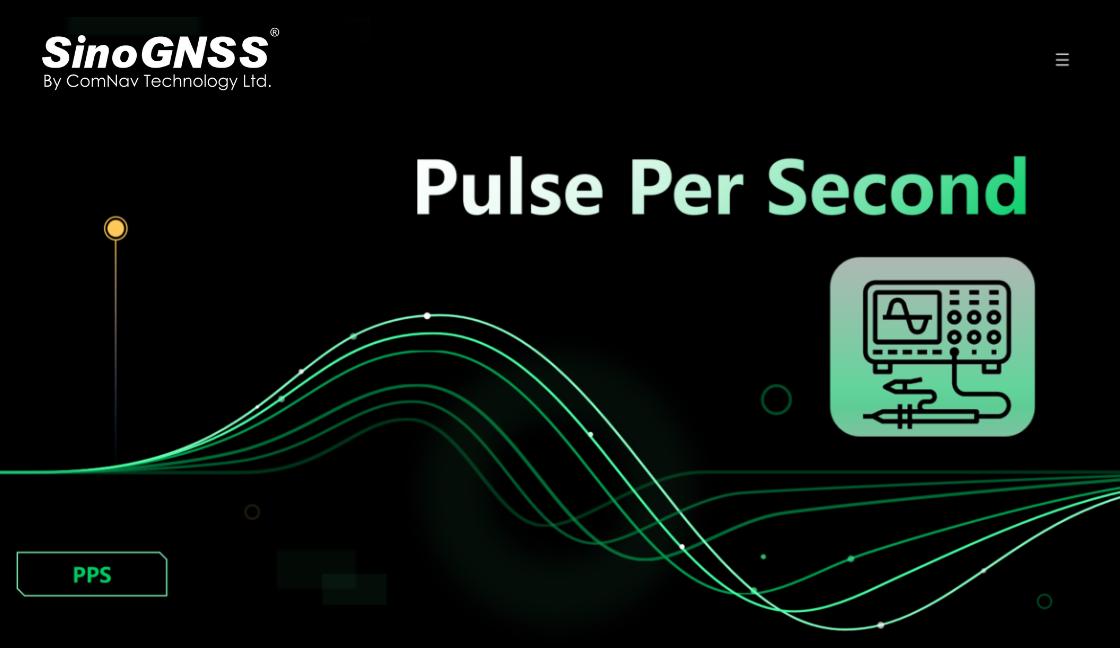Instructions for use of PPS
PPS is a precise time marker that emits a pulse every second. The emission of this pulse is extremely accurate, typically with an error in the nanosecond range. A pulse per second (PPS or 1PPS) is an electrical signal that has a width of less than one second and a sharply rising or abruptly falling edge that accurately repeats once per second. PPS signals are output by radio beacons, frequency standards, other types of precision oscillators and some GPS receivers.
ln GNSS receivers, PPS signals can be utilized to improve positioning accuracy. By correlating the PPS signal with the arrival times of satellite signals, the receiver can determine its position with greater accuracy.
The PPS function in GNSS provides a high-precision time reference, which is essential for applications requiring accurate time synchronization and positioning.
Many people may only know the meaning, but don’t know much about the actual operation. There are two commands related to “PPS”: “PPSCONTROL” and “CLOCKOFFSET”. In today's article, ComNav will introduce these two commands to you and tell you how to use the PPS function.
1 PPSCONTROL //Set PPS signal characteristics
Format:PPSCONTROL <switch> <polarity> <period> <pulse-width>
Description:This command controls the polarity, period, and pulse width of the pulse level output. You can also use this command to disable the PPS output.
Parameter:
【switch】 “enable” or “disable”, where “enable” means turning on PPS output (default is turned on), “disable” means turning off PPS output (once this field is set to disable, other parameters will be ignored)
【polarity】supports “positive” and “negative” , “positive” means high level pulse mode and “negative” means low level pulse mode.
【period】in seconds, the update rate can be up to 10Hz.
【pulse-width】in microseconds, pulse-width should be less than half of period.
Example: PPSCONTROL ENABLE POSITIVE 1 1000
2 CLOCKOFFSET //Set PPS output delay
Format: CLOCKOFFSET <delay>
Description: This command sets the delay in PPS output in nanoseconds. Because of the following two factors, the PPS signal is delayed from the actual measurement time:
➤ Signal path delay from antenna to receiver
Using a cable with a 10ns delay will introduce a 10ns delay in the PPS output;
➤ Path delay from RF to digital part of receiver
Across different board types and signal processing methods, there are delays;
The default settings compensate for major shared delays, but users should adjust for residual delays based on antenna and cable differences. After setting, both instructions can save the settings through the "saveconfig" command, and the status of markcontrol can be queried through the "log sysconfig" command.
Parameter: A positive value of delay indicates delayed output, and a negative value indicates early output.
Example: CLOCKOFFSET -200 // Advance PPS output by 200 ns.
3 PPS test instructions
Test environment: oscilloscope tests PPS signal

(1) Test PPS signal output
Command: PPSCONTROL ENABLE POSITIVE 1 1000
During the test, the channel is adjusted to 1.000S. The oscilloscope waveform is as follows. After zooming in, you can see that the PPS pulse width is 1000.
 |  |  |
(2) Test with different pulse output period and width
Command: PPSCONTROL ENABLE POSITIVE 0.5 500
During the test, the channel is adjusted to 1.000S. The oscilloscope waveform is as follows. After amplification, you can see that the PPS pulse output period is 0.5 and the PPS pulse width is 500.
 |  |  |
(3) Disconnect with the antenna and continues PPS signal output
Command: PPSCONTROL ENABLE POSITIVE 1 1000 1 //Force output mode (positioning or not positioning)
Note 1: After disconnect with antenna, the PPS accuracy decrease as time goes.
Note 2: K8 firmware of 2022.6.10 and later versions are supported and can be obtained by contacting technical support.

 |  |  |
All SinoGNSS’s GNSS modules support PPS function. Please have a visit of our website and view detailed information.
https://www.comnavtech.com/Products/1625390818125623296.html
 |  |  |
 |  |  |
About ComNav Technology
ComNav Technology develops and manufactures GNSS OEM boards and receivers for high precision positioning demanded applications. Its technology already been used in a wide range of applications such as surveying, construction, machine control, agriculture, intelligent transportation, precise timing, deformation monitoring, unmanned system. With a team dedicated for the GNSS technology, ComNav Technology is trying its best to supply reliable and competitive products to worldwide customers. ComNav Technology has been listed on the Shanghai Stock Exchange (Science and Technology Board), securities :ComNav Technology (Compass Navigation), Stock code: 688592.
About SinoGNSS®
SinoGNSS® is the official trademark of ComNav Technology Ltd., registered in People's Republic of China, EU, USA and Canada. All other trademarks are the property of their respective owners.
About ComNavTech®
ComNavTech® is the official trademark of ComNav Technology Ltd., registered in People's Republic of China, EU, USA and Canada. All other trademarks are the property of their respective owners.
About ComNav Technology
ComNav Technology develops and manufactures GNSS OEM boards and receivers for high precision positioning demanded applications. Its technology already been used in a wide range of applications such as surveying, construction, machine control, agriculture, intelligent transportation, precise timing, deformation monitoring, unmanned system. With a team dedicated for the GNSS technology, ComNav Technology is trying its best to supply reliable and competitive products to worldwide customers. ComNav Technology has been listed on the Shanghai Stock Exchange (Science and Technology Board), securities :ComNav Technology (Compass Navigation), Stock code: 688592.
About SinoGNSS®
SinoGNSS® is the official trademark of ComNav Technology Ltd., registered in People's Republic of China, EU, USA and Canada. All other trademarks are the property of their respective owners.
About ComNavTech®
ComNavTech® is the official trademark of ComNav Technology Ltd., registered in People's Republic of China, EU, USA and Canada. All other trademarks are the property of their respective owners.






